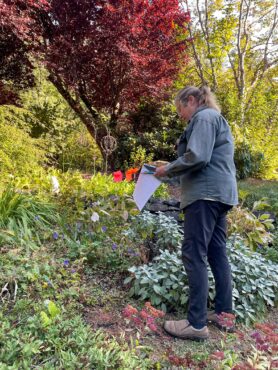
It happens when you’ve been gardening in the same place for a long time: You realize you are living in an overgrown jungle. Unless you’ve been really conscientious about dividing your muscular perennials every few years, you suddenly notice they are not blooming as well as they should; and the bullies are crowding out the meeker, weaker little guys.
You realize you need to take action. You know there are valuable plants in there and your conservation-mindedness says you can’t just ditch or compost perennials that some other gardener might love to have. But the job of digging and replanting seems overwhelming.
So, “who you gonna call?”
Your Kitsap County Master Gardener Salvage Team, that’s who!
The salvage team is part of the Plant Sale Committee, which raises funds through the Master Gardener Foundation of Kitsap County. The funds support the demonstration gardens that donate thousands of pounds of vegetables to local food banks, diagnostic clinics at farmers markets and public events, youth programs at the demo gardens and public garden seminars.
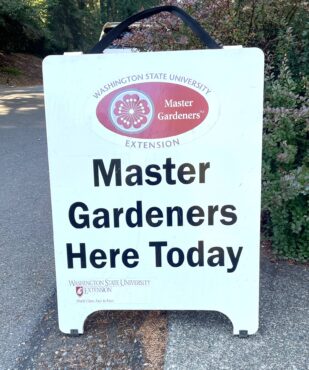
Starting on a small scale in 2009, Master Gardeners Chrissy Petoff and Christine Nelson decided to enhance the annual plant sale by salvaging plants from their own gardens. Petoff brought in 75 plants that first year. The following year, a team of volunteers from the new class of Master Gardener recruits set a goal to collect 500 plants from their own gardens. They collected 1,000.
By 2011, the group was off and running with a very organized, task-oriented system. Volunteer assignments included obtaining soil, pots, labels and signs. Leadership tasks included setting up “digs” with donors, organizing volunteer crews to do the actual digging and transportation of plants, and coordinating dig times.
Originally named “The Dirty Dozen,” the Master Gardeners use their own tools to dig and divide plants, as well as their own vehicles to transport soil and pots. Jobs range from physical work such as digging, dividing and lifting of plants, to the less rigorous assignments of labeling the plants for the big spring plant sale. Donors are asked to identify their plants, but sometimes they don’t know the full name, have lost the tags or simply never knew. That’s when the job of researching and identifying comes in.
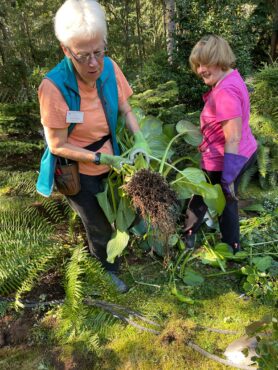
By 2022, the Kitsap County Master Gardener Salvage Team grew from the original Dirty Dozen to a well-oiled and smooth-running organization of up to 70 members, including a lead team of eight people. The lead team scouts potential plant donors from among other Master Gardeners, families, friends and neighbors. They advertise in the summer on the foundation’s Facebook page and put out a “Got Plants?” flyer listing the perennial plants they want and those they do not want.
The team leaders have a good list by the end of August. They analyze the information and determine the dig dates. Anne Haines manages the database and keeps the list that is used for making the plant labels. Team members sign up and are scheduled throughout September and October. They usually complete about 30 digs each fall.
An Emergency Dig
It’s all very organized and runs like clockwork. I speak from experience — I was the very grateful donor for a dig last September. We needed to remove a huge perennial bed in the middle of the backyard to make way for a new drain field for our septic system. The drain field was failing and we didn’t realize it was under almost our entire backyard. There were some precious plants that I wanted to save and I knew about the salvage team program. We were in luck. The schedule was pretty full but Haines thought she would be able to fit us in.
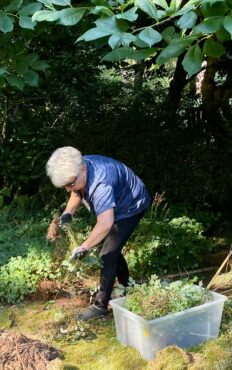
The Dig Days
The process began with a visit from Haines, one of the team leaders. She came with a clipboard in hand and walked around the garden with me as we identified the plants and the number of divisions she thought she could get from each clump. She was careful to get as much information as she could about each plant, including full name and blossom color. Haines marked the digging areas with numbered flags that matched the descriptions in her notes.
I offered some choice plants from my front garden, which was getting overcrowded, so she decided to fit two digs into the schedule for us.
On the dig day, three trucks showed up and out jumped the workers, tools in hand. After gathering and getting assignments from the leaders, the workers, armed with large bins, spread out and began digging. Each clump of plants was marked with a label designating its name and color. When large clumps could be taken, they removed the whole clump to divide back at the potting site.
The same thing happened the next week when the dig took place in my front garden. They took three big peonies and lots of other perennial divisions. This time, they took care to smooth over each digging spot so you could hardly tell any plants had been removed. They normally do this, but there was no need in my back garden because the whole area was going to be completely dug up anyway.
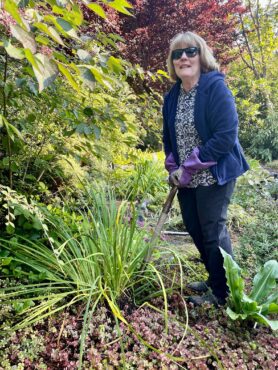
After each dig, the workers load up the trucks and proceed to one of the potting sites where the potting-up process takes place and where the plants will be overwintered. The digs always take place in the morning and the potting and storing job takes place immediately after to be sure the plants are kept in top condition.
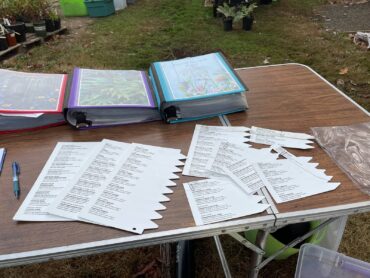 I was so intrigued by the whole process that I asked if I could observe another dig and follow through the whole potting and storing process. I was invited to attend one at Linda Braun’s garden the following week. Braun is one of the other team leaders and also manages the budget for the salvage team.
I was so intrigued by the whole process that I asked if I could observe another dig and follow through the whole potting and storing process. I was invited to attend one at Linda Braun’s garden the following week. Braun is one of the other team leaders and also manages the budget for the salvage team.
This dig followed a more normal process of thinning and taking smaller divisions while leaving half or more of the mother plant and smoothing the soil back into place. It differed from mine where I wanted to donate the entire plant and they didn’t have to leave the bed looking good.
Braun’s garden was getting overcrowded and needed a bit of thinning. It looked nice when the salvage crew was finished and the remaining plants were probably healthier and could breathe a bit better.
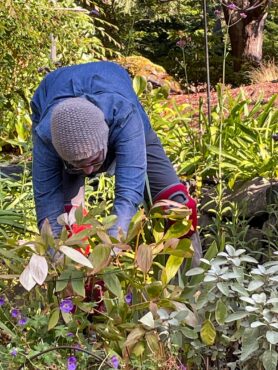
Potting Up
The salvage crew has three potting-up and storage sites with work tables, pots and other supplies. On arrival, I checked out the tables where the team leaders had set up their notebooks with master lists of plants and high-quality, computer-generated tags with the plant name and description.
The trucks arrived at the site and the bins of plants were unloaded around the work tables. The workers began dividing, potting up and labeling.
The plants are stored for the winter on wooden pallets placed on burlap or landscape fabric. Shade structures and deer fencing are used as needed. The site hosts and other Master Gardeners take care of the plants through the winter months. There are three storage sites and approximately 5,000 perennial plants are stored.
In spring, salvage team members groom the plants and move them to the sale site. This year’s sale will be on Saturday, May 13, from 9 a.m. to 3 p.m. in the Presidents Hall at the Kitsap County Fairgrounds, located at 1250 Fairgrounds Road NW in Bremerton. You can learn more about the Master Gardener Foundation of Kitsap County at kitsapgardens.org.




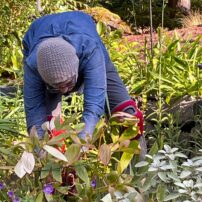
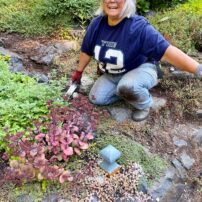
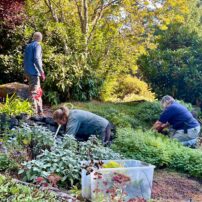
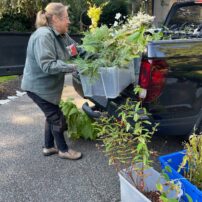
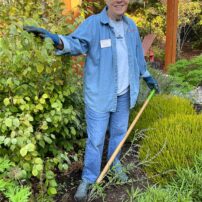
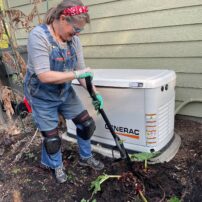
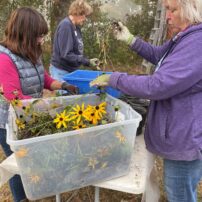
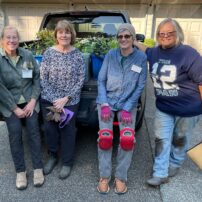
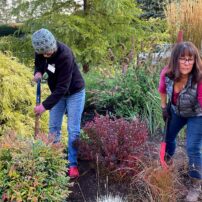
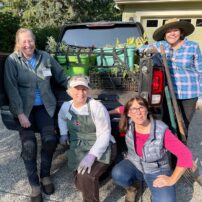
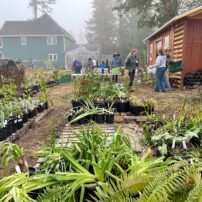
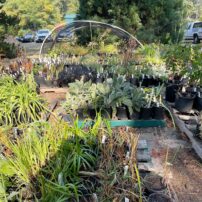
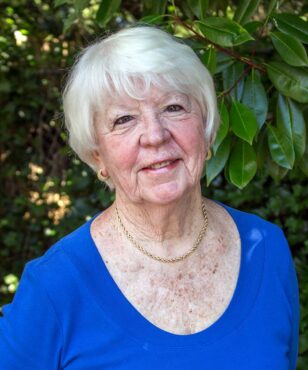























Comments